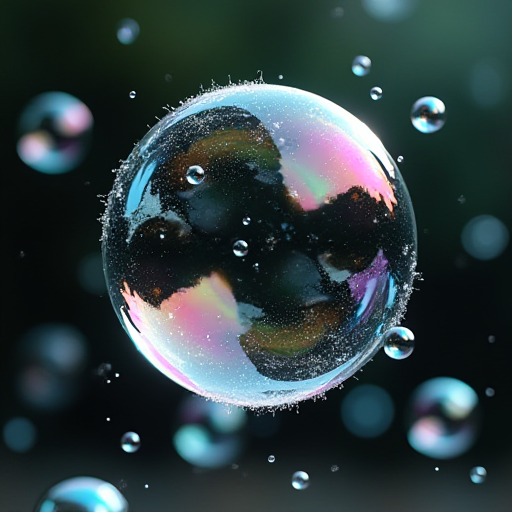
Why Do Bubbles Pop?
Bubbles are fascinating phenomena that capture the imagination of both children and adults. They are delicate, colorful, and transient, forming from a simple mixture of water and soap. But why do these enchanting spheres eventually burst? This article delves into the science behind bubbles and uncovers the reasons why they pop.
The Anatomy of a Bubble
To understand why bubbles pop, it is essential to first understand their structure. A bubble is a thin film of liquid, usually water mixed with soap or detergent, that traps air inside. This liquid film consists of three layers: a thin layer of water sandwiched between two layers of soap molecules. The soap molecules have hydrophilic (water-attracting) heads and hydrophobic (water-repelling) tails, which stabilize the bubble by reducing surface tension.
Surface Tension
Surface tension is the elastic tendency of a fluid surface that makes it acquire the least surface area possible. In the case of bubbles, surface tension acts to minimize the surface area of the liquid film, creating a spherical shape. Soap decreases the surface tension of water, allowing the bubble to stretch without breaking. However, this delicate balance is easily disrupted, leading to the eventual popping of the bubble.
Factors Contributing to Bubble Popping
Several factors can cause a bubble to pop, including evaporation, external forces, and surface contamination.
Evaporation
Evaporation is a significant factor in the lifespan of a bubble. The thin film of water in a bubble is highly susceptible to evaporation, especially in dry or hot environments. As the water evaporates, the film becomes thinner and weaker, eventually breaking and causing the bubble to pop. This is why bubbles tend to last longer in humid environments, where the rate of evaporation is slower.
External Forces
External forces, such as wind, touch, or contact with solid objects, can easily disrupt the delicate balance of forces within a bubble. The pressure differential across the bubble film can lead to instability and rupture. Even the slightest disturbance can create stress points on the bubble, causing it to burst.
Surface Contamination
Bubbles are also prone to popping due to surface contamination. Dust, dirt, or any foreign particles can weaken the film by creating irregularities in the surface tension. When a contaminant lands on the surface of a bubble, it disrupts the uniformity of the soap film, leading to areas of increased stress and potential rupture.
Scientific Insights
Recent scientific studies have provided deeper insights into the mechanics of bubble popping. High-speed cameras and advanced imaging techniques have allowed researchers to observe the precise moment a bubble bursts. These studies reveal that when a bubble pops, it usually ruptures at a single point, creating a hole that rapidly expands until the entire structure collapses.
Additionally, research has shown that the thickness of the bubble film and the concentration of the soapy solution play critical roles in determining a bubble's longevity. A thicker film can withstand more stress before popping, while a higher concentration of soap can enhance the film's elasticity and resilience.
Conclusion
Bubbles pop due to a combination of factors, including evaporation, external forces, and surface contamination. The delicate balance of forces within the bubble's thin film is easily disrupted, leading to its eventual demise. Understanding the science behind bubbles not only satisfies our curiosity but also highlights the intricate interplay of physics, chemistry, and environmental conditions that govern these ephemeral marvels.
The next time you blow bubbles or witness them floating in the air, remember the fascinating science that explains their brief but beautiful existence. Whether in a child's backyard or in a research laboratory, bubbles continue to captivate and inspire wonder in the world around us.
